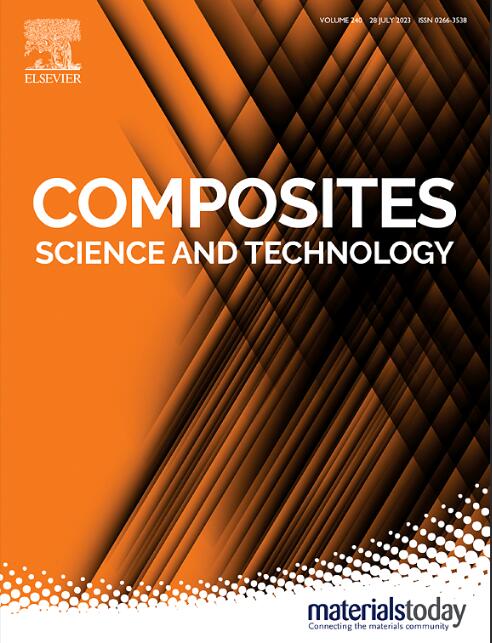Bio-inspired inorganic-organic structure synergistic interfacial modification for enhancing mechanical and electromagnetic interference shielding properties of carbon fiber/epoxy composites
IF 8.3
1区 材料科学
Q1 MATERIALS SCIENCE, COMPOSITES
引用次数: 0
Abstract
Carbon fiber reinforced polymer composites (CFRPs) are in huge demand in aerospace and navigation to reduce fuel consumption, but the weak mechanical and electromagnetic (EM) shielding properties remain pressing issues. Inspired by the bio-adhesion of mussels in nature, we self-polymerized organic polydopamine (PDA) layer on the carbon fiber (CF) surface as a versatile platform and successfully introduced inorganic Co3O4 nanosheets into the PDA-coated CF (PCF) surface via self-assembly process to enhance the interfacial bonding and electrical conductivity between the fiber and epoxy. The results showed that Co3O4-PDA-CF/EP outperformed unmodified CF/EP in flexural strength, interlaminar shear strength (ILSS), interfacial shear strength (IFSS), and electromagnetic interference (EMI) shielding properties, with enhancements of 59.4 %, 76.1 %, 131.5 %, and 61.1 %, respectively. Notably, the main fracture mechanism of composites gradually transfers from interfacial failure to cohesive failure. Briefly, the work provides experimental validation for developing high-performance multifunctional CFRPs and show potential application prospects in aircraft and other fields.

仿生无机-有机结构协同界面改性提高碳纤维/环氧复合材料的机械和电磁屏蔽性能
碳纤维增强聚合物复合材料(CFRPs)在航空航天和航海领域有着巨大的需求,以降低燃料消耗,但其弱的机械和电磁屏蔽性能仍然是亟待解决的问题。受自然界贻贝生物粘附的启发,我们在碳纤维(CF)表面自聚合有机聚多巴胺(PDA)层作为多功能平台,并通过自组装工艺成功地将无机Co3O4纳米片引入到碳纤维(PCF)表面,以增强纤维与环氧树脂之间的界面键合和导电性。结果表明,Co3O4-PDA-CF/EP在抗弯强度、层间剪切强度(ILSS)、界面剪切强度(IFSS)和电磁干扰(EMI)屏蔽性能上均优于未改性的CF/EP,分别提高了59.4%、76.1%、131.5%和61.1%。值得注意的是,复合材料的主要断裂机制逐渐从界面破坏转变为内聚破坏。总之,该工作为开发高性能多功能碳纤维复合材料提供了实验验证,并在飞机等领域显示了潜在的应用前景。
本文章由计算机程序翻译,如有差异,请以英文原文为准。
求助全文
约1分钟内获得全文
求助全文
来源期刊

Composites Science and Technology
工程技术-材料科学:复合
CiteScore
16.20
自引率
9.90%
发文量
611
审稿时长
33 days
期刊介绍:
Composites Science and Technology publishes refereed original articles on the fundamental and applied science of engineering composites. The focus of this journal is on polymeric matrix composites with reinforcements/fillers ranging from nano- to macro-scale. CSTE encourages manuscripts reporting unique, innovative contributions to the physics, chemistry, materials science and applied mechanics aspects of advanced composites.
Besides traditional fiber reinforced composites, novel composites with significant potential for engineering applications are encouraged.
 求助内容:
求助内容: 应助结果提醒方式:
应助结果提醒方式:


